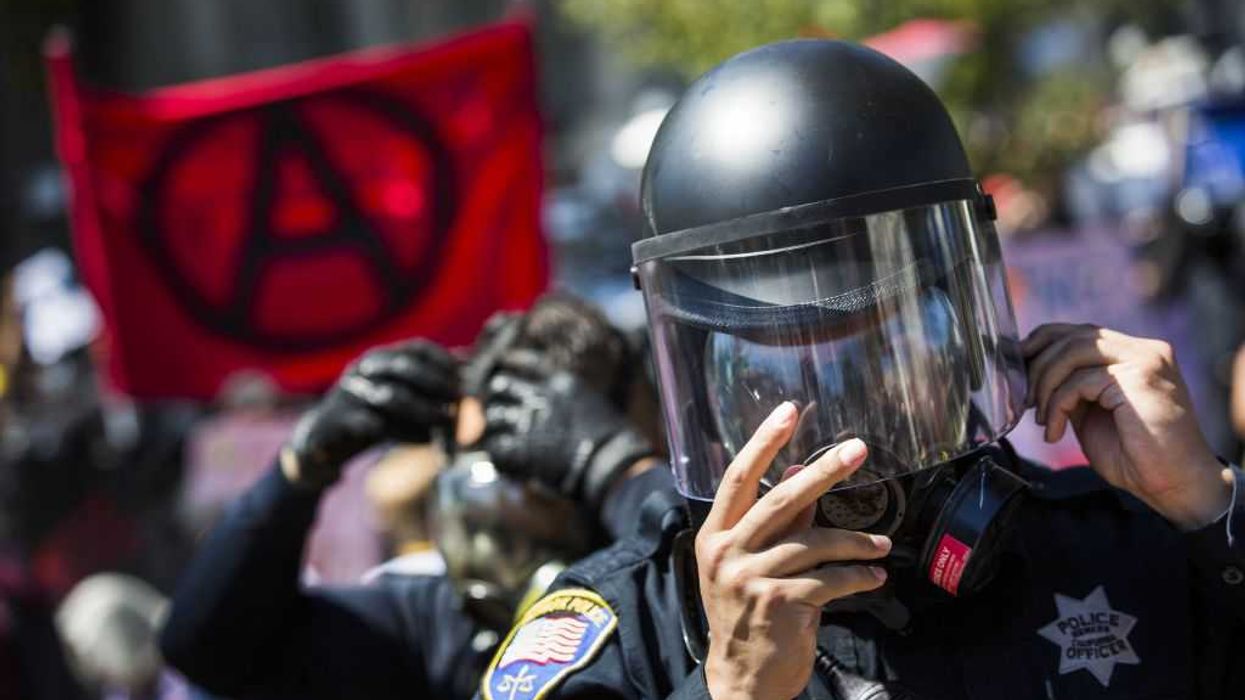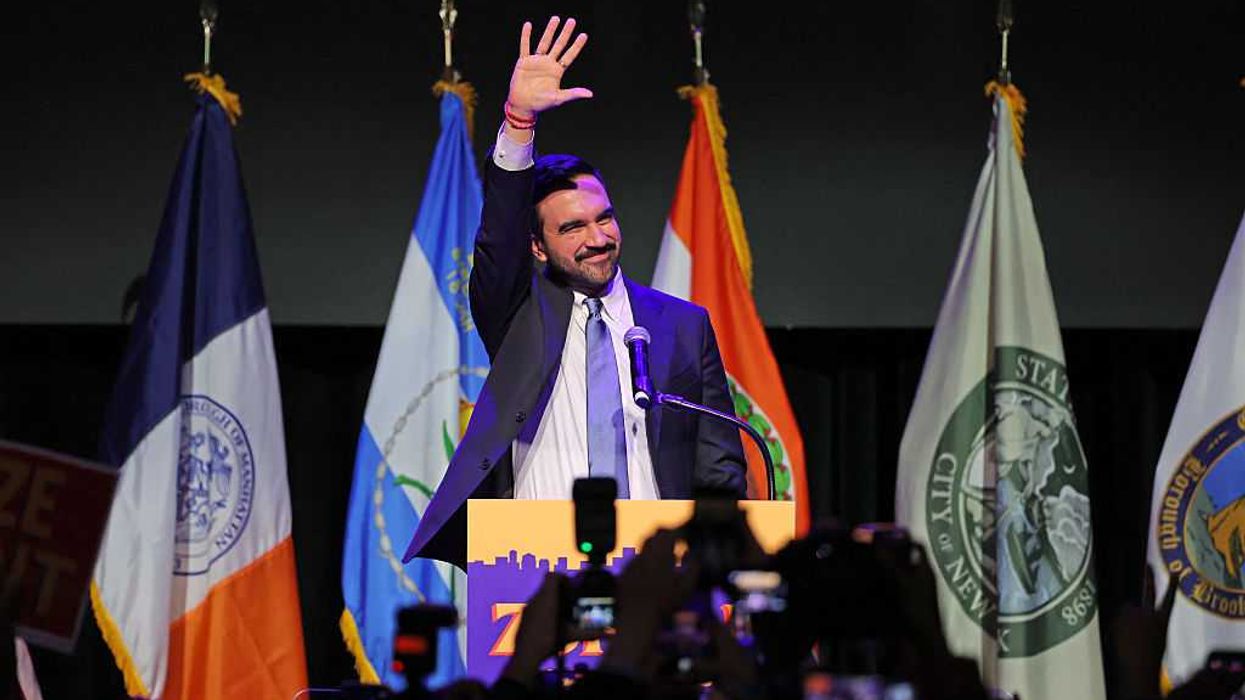Get special coverage as Amy Holmes, Andrew Wilkow, E.D. Hill and more anchor the convention on TheBlaze TV!
Read Paul Ryan's prepared remarks for the GOP Convention:
Mr. Chairman, delegates, and fellow citizens: I am honored by the support of this convention for vice president of the United States.
I accept the duty to help lead our nation out of a jobs crisis and back to prosperity – and I know we can do this.
I accept the calling of my generation to give our children the America that was given to us, with opportunity for the young and security for the old – and I know that we are ready.
Our nominee is sure ready. His whole life has prepared him for this moment – to meet serious challenges in a serious way, without excuses and idle words. After four years of getting the run-around, America needs a turnaround, and the man for the job is Governor Mitt Romney.
I’m the newcomer to the campaign, so let me share a first impression. I have never seen opponents so silent about their record, and so desperate to keep their power.
They’ve run out of ideas. Their moment came and went. Fear and division are all they’ve got left.
With all their attack ads, the president is just throwing away money – and he’s pretty experienced at that. You see, some people can’t be dragged down by the usual cheap tactics, because their ability, character, and plain decency are so obvious – and ladies and gentlemen, that is Mitt Romney.
For my part, your nomination is an unexpected turn. It certainly came as news to my family, and I’d like you to meet them: My wife Janna, our daughter Liza, and our boys Charlie and Sam.
The kids are happy to see their grandma, who lives in Florida. There she is – my Mom, Betty.
My Dad, a small-town lawyer, was also named Paul. Until we lost him when I was 16, he was a gentle presence in my life. I like to think he’d be proud of me and my sister and brothers, because I’m sure proud of him and of where I come from, Janesville, Wisconsin.
I live on the same block where I grew up. We belong to the same parish where I was baptized. Janesville is that kind of place.
The people of Wisconsin have been good to me. I’ve tried to live up to their trust. And now I ask those hardworking men and women, and millions like them across America, to join our cause and get this country working again.
When Governor Romney asked me to join the ticket, I said, “Let’s get this done” – and that is exactly, what we’re going to do.
President Barack Obama came to office during an economic crisis, as he has reminded us a time or two. Those were very tough days, and any fair measure of his record has to take that into account. My home state voted for President Obama. When he talked about change, many people liked the sound of it, especially in Janesville, where we were about to lose a major factory.
A lot of guys I went to high school with worked at that GM plant. Right there at that plant, candidate Obama said: “I believe that if our government is there to support you … this plant will be here for another hundred years.” That’s what he said in 2008.
Well, as it turned out, that plant didn’t last another year. It is locked up and empty to this day. And that’s how it is in so many towns today, where the recovery that was promised is nowhere in sight.
Right now, 23 million men and women are struggling to find work. Twenty-three million people, unemployed or underemployed. Nearly one in six Americans is living in poverty. Millions of young Americans have graduated from college during the Obama presidency, ready to use their gifts and get moving in life. Half of them can’t find the work they studied for, or any work at all.
So here’s the question: Without a change in leadership, why would the next four years be any different from the last four years?
The first troubling sign came with the stimulus. It was President Obama’s first and best shot at fixing the economy, at a time when he got everything he wanted under one-party rule. It cost $831 billion – the largest one-time expenditure ever by our federal government.
It went to companies like Solyndra, with their gold-plated connections, subsidized jobs, and make-believe markets. The stimulus was a case of political patronage, corporate welfare, and cronyism at their worst. You, the working men and women of this country, were cut out of the deal.
What did the taxpayers get out of the Obama stimulus? More debt. That money wasn’t just spent and wasted – it was borrowed, spent, and wasted.
Maybe the greatest waste of all was time. Here we were, faced with a massive job crisis – so deep that if everyone out of work stood in single file, that unemployment line would stretch the length of the entire American continent. You would think that any president, whatever his party, would make job creation, and nothing else, his first order of economic business.
But this president didn’t do that. Instead, we got a long, divisive, all-or-nothing attempt to put the federal government in charge of health care.
Obamacare comes to more than two thousand pages of rules, mandates, taxes, fees, and fines that have no place in a free country.
The president has declared that the debate over government-controlled health care is over. That will come as news to the millions of Americans who will elect Mitt Romney so we can repeal Obamacare.
And the biggest, coldest power play of all in Obamacare came at the expense of the elderly.
You see, even with all the hidden taxes to pay for the health care takeover, even with new taxes on nearly a million small businesses, the planners in Washington still didn’t have enough money. They needed more. They needed hundreds of billions more. So, they just took it all away from Medicare. Seven hundred and sixteen billion dollars, funneled out of Medicare by President Obama. An obligation we have to our parents and grandparents is being sacrificed, all to pay for a new entitlement we didn’t even ask for. The greatest threat to Medicare is Obamacare, and we’re going to stop it.
In Congress, when they take out the heavy books and wall charts about Medicare, my thoughts go back to a house on Garfield Street in Janesville. My wonderful grandma, Janet, had Alzheimer’s and moved in with Mom and me. Though she felt lost at times, we did all the little things that made her feel loved.
We had help from Medicare, and it was there, just like it’s there for my Mom today. Medicare is a promise, and we will honor it. A Romney-Ryan administration will protect and strengthen Medicare, for my Mom’s generation, for my generation, and for my kids and yours.
So our opponents can consider themselves on notice. In this election, on this issue, the usual posturing on the Left isn’t going to work. Mitt Romney and I know the difference between protecting a program, and raiding it. Ladies and gentlemen, our nation needs this debate. We want this debate. We will win this debate.
Obamacare, as much as anything else, explains why a presidency that began with such anticipation now comes to such a disappointing close.
It began with a financial crisis; it ends with a job crisis.
It began with a housing crisis they alone didn’t cause; it ends with a housing crisis they didn’t correct.
It began with a perfect Triple-A credit rating for the United States; it ends with a downgraded America.
It all started off with stirring speeches, Greek columns, the thrill of something new. Now all that’s left is a presidency adrift, surviving on slogans that already seem tired, grasping at a moment that has already passed, like a ship trying to sail on yesterday’s wind.
President Obama was asked not long ago to reflect on any mistakes he might have made. He said, well, “I haven’t communicated enough.” He said his job is to “tell a story to the American people” – as if that’s the whole problem here? He needs to talk more, and we need to be better listeners?
Ladies and gentlemen, these past four years we have suffered no shortage of words in the White House. What’s missing is leadership in the White House. And the story that Barack Obama does tell, forever shifting blame to the last administration, is getting old. The man assumed office almost four years ago – isn’t it about time he assumed responsibility?
In this generation, a defining responsibility of government is to steer our nation clear of a debt crisis while there is still time. Back in 2008, candidate Obama called a $10 trillion national debt “unpatriotic” – serious talk from what looked to be a serious reformer.
Yet by his own decisions, President Obama has added more debt than any other president before him, and more than all the troubled governments of Europe combined. One president, one term, $5 trillion in new debt.
He created a bipartisan debt commission. They came back with an urgent report. He thanked them, sent them on their way, and then did exactly nothing.
Republicans stepped up with good-faith reforms and solutions equal to the problems. How did the president respond? By doing nothing – nothing except to dodge and demagogue the issue.
So here we are, $16 trillion in debt and still he does nothing. In Europe, massive debts have put entire governments at risk of collapse, and still he does nothing. And all we have heard from this president and his team are attacks on anyone who dares to point out the obvious.
They have no answer to this simple reality: We need to stop spending money we don’t have.
My Dad used to say to me: “Son. You have a choice: You can be part of the problem, or you can be part of the solution.” The present administration has made its choices. And Mitt Romney and I have made ours: Before the math and the momentum overwhelm us all, we are going to solve this nation’s economic problems.
And I’m going to level with you: We don’t have that much time. But if we are serious, and smart, and we lead, we can do this.
After four years of government trying to divide up the wealth, we will get America creating wealth again. With tax fairness and regulatory reform, we’ll put government back on the side of the men and women who create jobs, and the men and women who need jobs.
My Mom started a small business, and I’ve seen what it takes. Mom was 50 when my Dad died. She got on a bus every weekday for years, and rode 40 miles each morning to Madison. She earned a new degree and learned new skills to start her small business. It wasn’t just a new livelihood. It was a new life. And it transformed my Mom from a widow in grief to a small businesswoman whose happiness wasn’t just in the past. Her work gave her hope. It made our family proud. And to this day, my Mom is my role model.
Behind every small business, there’s a story worth knowing. All the corner shops in our towns and cities, the restaurants, cleaners, gyms, hair salons, hardware stores – these didn’t come out of nowhere. A lot of heart goes into each one. And if small businesspeople say they made it on their own, all they are saying is that nobody else worked seven days a week in their place. Nobody showed up in their place to open the door at five in the morning. Nobody did their thinking, and worrying, and sweating for them. After all that work, and in a bad economy, it sure doesn’t help to hear from their president that government gets the credit. What they deserve to hear is the truth: Yes, you did build that.
We have a plan for a stronger middle class, with the goal of generating 12 million new jobs over the next four years.
In a clean break from the Obama years, and frankly from the years before this president, we will keep federal spending at 20 percent of GDP, or less. That is enough. The choice is whether to put hard limits on economic growth, or hard limits on the size of government, and we choose to limit government.
I learned a good deal about economics, and about America, from the author of the Reagan tax reforms – the great Jack Kemp. What gave Jack that incredible enthusiasm was his belief in the possibilities of free people, in the power of free enterprise and strong communities to overcome poverty and despair. We need that same optimism right now.
And in our dealings with other nations, a Romney-Ryan administration will speak with confidence and clarity. Wherever men and women rise up for their own freedom, they will know that the American president is on their side. Instead of managing American decline, leaving allies to doubt us and adversaries to test us, we will act in the conviction that the United States is still the greatest force for peace and liberty that this world has ever known.
President Obama is the kind of politician who puts promises on the record, and then calls that the record. But we are four years into this presidency. The issue is not the economy as Barack Obama inherited it, not the economy as he envisions it, but this economy as we are living it.
College graduates should not have to live out their 20s in their childhood bedrooms, staring up at fading Obama posters and wondering when they can move out and get going with life. Everyone who feels stuck in the Obama economy is right to focus on the here and now. And I hope you understand this too, if you’re feeling left out or passed by: You have not failed, your leaders have failed you.
None of us have to settle for the best this administration offers – a dull, adventureless journey from one entitlement to the next, a government-planned life, a country where everything is free but us.
Listen to the way we’re spoken to already, as if everyone is stuck in some class or station in life, victims of circumstances beyond our control, with government there to help us cope with our fate.
It’s the exact opposite of everything I learned growing up in Wisconsin, or at college in Ohio. When I was waiting tables, washing dishes, or mowing lawns for money, I never thought of myself as stuck in some station in life. I was on my own path, my own journey, an American journey where I could think for myself, decide for myself, define happiness for myself. That’s what we do in this country. That’s the American Dream. That’s freedom, and I’ll take it any day over the supervision and sanctimony of the central planners.
By themselves, the failures of one administration are not a mandate for a new administration. A challenger must stand on his own merits. He must be ready and worthy to serve in the office of president.
We’re a full generation apart, Governor Romney and I. And, in some ways, we’re a little different. There are the songs on his iPod, which I’ve heard on the campaign bus and on many hotel elevators. He actually urged me to play some of these songs at campaign rallies. I said, I hope it’s not a deal-breaker Mitt, but my playlist starts with AC/DC, and ends with Zeppelin.
A generation apart. That makes us different, but not in any of the things that matter. Mitt Romney and I both grew up in the heartland, and we know what places like Wisconsin and Michigan look like when times are good, when people are working, when families are doing more than just getting by. And we both know it can be that way again.
We’ve had very different careers – mine mainly in public service, his mostly in the private sector. He helped start businesses and turn around failing ones. By the way, being successful in business – that’s a good thing.
Mitt has not only succeeded, but succeeded where others could not. He turned around the Olympics at a time when a great institution was collapsing under the weight of bad management, overspending, and corruption – sounds familiar, doesn’t it?
He was the Republican governor of a state where almost nine in ten legislators are Democrats, and yet he balanced the budget without raising taxes. Unemployment went down, household incomes went up, and Massachusetts, under Mitt Romney, saw its credit rating upgraded.
Mitt and I also go to different churches. But in any church, the best kind of preaching is done by example. And I’ve been watching that example. The man who will accept your nomination tomorrow is prayerful and faithful and honorable. Not only a defender of marriage, he offers an example of marriage at its best. Not only a fine businessman, he’s a fine man, worthy of leading this optimistic and good-hearted country.
Our different faiths come together in the same moral creed. We believe that in every life there is goodness; for every person, there is hope. Each one of us was made for a reason, bearing the image and likeness of the Lord of Life.
We have responsibilities, one to another – we do not each face the world alone. And the greatest of all responsibilities, is that of the strong to protect the weak. The truest measure of any society is how it treats those who cannot defend or care for themselves.
Each of these great moral ideas is essential to democratic government – to the rule of law, to life in a humane and decent society. They are the moral creed of our country, as powerful in our time, as on the day of America’s founding. They are self-evident and unchanging, and sometimes, even presidents need reminding, that our rights come from nature and God, not from government.
The founding generation secured those rights for us, and in every generation since, the best among us have defended our freedoms. They are protecting us right now. We honor them and all our veterans, and we thank them.
The right that makes all the difference now, is the right to choose our own leaders. And you are entitled to the clearest possible choice, because the time for choosing is drawing near. So here is our pledge.
We will not duck the tough issues, we will lead.
We will not spend four years blaming others, we will take responsibility.
We will not try to replace our founding principles, we will reapply our founding principles.
The work ahead will be hard. These times demand the best of us – all of us, but we can do this. Together, we can do this.
We can get this country working again. We can get this economy growing again. We can make the safety net safe again. We can do this.
Whatever your political party, let’s come together for the sake of our country. Join Mitt Romney and me. Let’s give this effort everything we have. Let’s see this through all the way. Let’s get this done.
Thank you, and God bless.

 Anadolu / Contributor | Getty Images
Anadolu / Contributor | Getty Images
 Brandon Bell / Staff | Getty Images
Brandon Bell / Staff | Getty Images Europa Press News / Contributor | Getty Images
Europa Press News / Contributor | Getty Images ANGELA WEISS / Contributor | Getty Images
ANGELA WEISS / Contributor | Getty Images